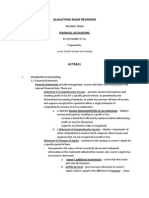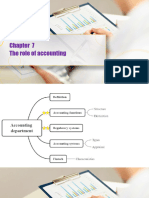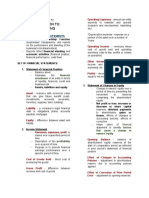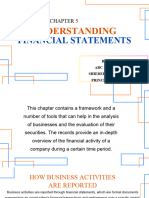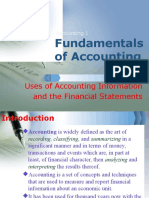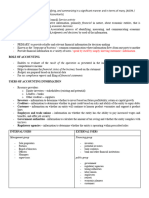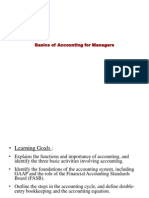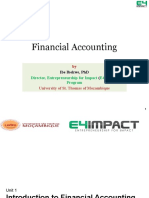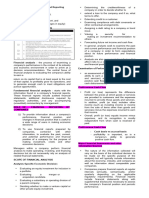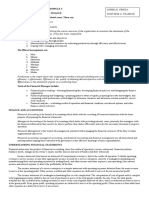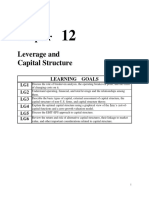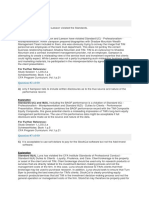FINANL
Accounting - identifying, measuring, and Types of Information Provided by Accounting
communicating economic information; "language of
quantitative - numerical
business"
qualitative - descriptive
Economic activity- transportation
financial information - summary, money
Overall objective- provide information
Types of Accounting Information for the users
3 important activities in accounting
General purpose - to all, public
Identifying- analyzing events and transactions to
determine whether or not they will be recognized. Special purpose - specific purpose, tax accounting,
management accounting -business/internal
Measuring - valuation by fact or opinion
Communicating- Process of transforming economic data
into useful accounting information, such as financial Distinction between accounting and financial
statements and other accounting reports, for management
dissemination to users.
ACCOUNTING
• Statutory requirement
(Notes)
• Following GAAP
Soft- balance statements
• Historical Transactions
Fair value- buyer and seller
• Recording transactions in a systematic manner for
Realizable value - original price
a particular period
Inflation- adjusted value
• Comes first before Financial Management
FINANCIAL MANAGEMENT
Fact
• Not a statutory requirement
- Cash Measurements
• Management Decisions
- Share Capital
• Future Planning
Opinion
• Deals with procurement and allocation of financial
- Estimates
resources
- Accounts Receivable
• Comes after Accounting
- Aging of Accounts Receivable
3 aspects
recording- reporting all aspects of events
classifying- assets, liab, equity
summarizing-financial statements
�USERS OF FINANCIAL INFORMATION • Corporation
• Internal Decision Makers - 5 to 15 members (odd numbers)
- Management - Time consuming to form
• External Decision Makers - Unlimited Capital
- Investor - Limited liability
- Employees ( not part of decision making ) - Double taxation
- Lenders - Government Regulations
- Suppliers Primary goal of managers
- Customers - A manager's primary goal is to maximize the value
of his or her firm's stock or
- Government amd their agencies
- Shareholders wealth maximization
- Public
Annual report- yearly report
LESSON 2 : INTRODUCTION TO FINANCIAL -discussion of operations
STATEMENTS
-basic financial statements
Form of Business Entities
• Sole proprietorship
Financial statements - how the firm is doing
- Owned by one person
- Easy form
Statement of financial position:
- Limited capital
balance sheet/
- Unlimited liability
- Minimum taxes
Cost liability - interest
- Few Government Regulations
assets - resources/owned by the company
• Partnership
- Owned by 2 or more person
Lesson
- Easy to form
Income statement
- Limited capital but has more capital compare to sole
proprietorship -Statements of operations, statement of income,
statement of earnings
- Unlimited liability (General Partnership)
-summarizes revenue and expenses and gains and
(Limited Partnership) losses, and ends with the net income for a specific
- Some partners will incur Limited liability period.
- Minimum taxes -multi step income statement
- More than sole proprietorship but less than -single step income statement
corporation
�Net sales- sales(revenue) reported as net in the income Statement of Cash Flow
statement
● A report that shows how items that affect the balance
Cost of goods sold-(cost of sales) sheet and
retailing firm- cost of good sold income statement affect the firm’s cash flows.
manufacturing firm- cost of good manufactured ● A report that shows all transactions affecting cash
flow
Service firm- do not have cost of goods sold
● Users of Statement of Cash Flow
○ Management
operating expenses -
○ Investors
selling- ads, sales commision, sales supplies used
○ Creditors
administrative- salaries, insurance, telephone, bad
Statement of Stockholders’ Equity
debt expense, and other costs difficult
● A statement that shows by how much a firm’s equity
to allocate
changed during the year and why this change occurred.
● Stockholders allow management to retain earnings
Other Income or Expense and reinvest them in the business.
Secondary activities of the firm, not Financial Analysis
directly related to the operations. ● Involves comparing the firm’s performance to that of
other firms in the same industry.
○ Lease income, dividend and interest
● Involves evaluation of trends in the firm’s financial
income, and gains and losses from the position over time.
sale of assets Horizontal Analysis
○ Interest expense ● Financial Statement Analysis technique that shows
changes in the amounts of corresponding financial
statement items over a period of time.
Tax expense
● Useful tool to evaluate the trend situations.
● Amount of taxes owed by the firm to a
Vertical Analysis
taxing authority.
● Financial Statement Analysis that shows each item on
● Tax Charge a statement as a percentage of a base figure within the
statement.
Other acronyms in the Income Statement ● In a statement of financial position, total of assets and
the total of liabilities and stockholders’ equity are
● EBIT - Earnings before interest and taxes generally used as base figures.
● EBITDA - Earnings before Interest, Taxes, ● In the income statement, sales figure is generally used
as the base and all other components are shown as a
Depreciation and Amortization
percentage of sales.
● EBT - Earnings Before Taxes










